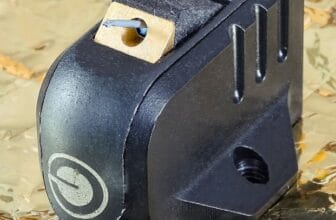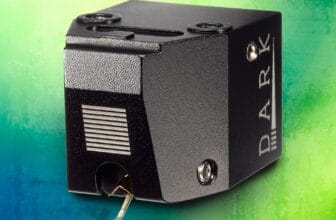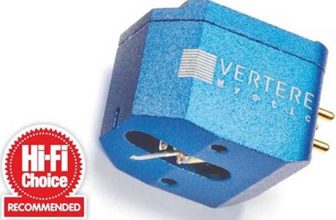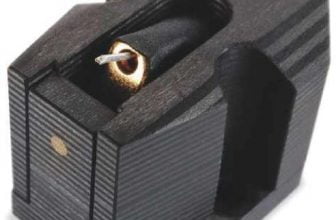Cusis E moving-coil cartridge Review – Michell Engineering
NEW PRODUCTS FROM Michell are rare things indeed so the arrival of a trio of moving-coil cartridges is big news. The Cusis range consists of three models that have been created with a view to being used with Michell’s own turntables, but nothing about their design and engineering precludes you from selecting them for another deck.
The Cusis E is designed around a samarium-cobalt magnet combined with pure iron to create an extremely stable magnetic field. Where the cartridges differ is that, as the affordable model, the Cusis E ‘makes do’ with an aluminium cantilever and elliptical stylus.
Recommended impedance is 100ohm and quoted output is 0.35mV, which is on the low side but not unmanageably so. The only area of note is that the Cusis E is fairly large. The overall weight is 8.9g and to set the recommended tracking force on an SME M2-9 arm sees the counterweight a fair distance back and some specialist arms might struggle with it. The overall height is also significant, which means adjustable VTA will be beneficial in securing the correct setup for it.
Easy mounting
A semi-nude design, with the cantilever and generator assembly visible through the open underside, the body is made of high-density Acetyl and has the benefit of threaded inserts for which Michell supplies a selection of bolts in varying lengths to aid with mounting. About the only negative is the absence of a stylus guard, although the body does a reasonable job of keeping fingers away from the more delicate bits.
Mounted on the SME fitted to an Avid Ingenium Twin (HFC 379) and running into a Cyrus Phono Signature (HFC 408), in the context of this very neutral front end, the Cusis E reveals a personality beyond fundamental competency.
Extremely competent, it manages to unpick the dense meanderings of Talk Talk’s Laughing Stock to let this
DETAILS
TELEPHONE 0208 9530771
WEBSITE michell-engineering. co.uk
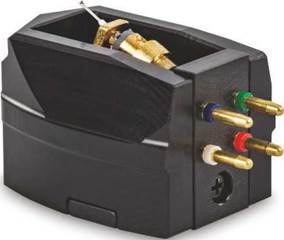
complex piece of music flow in a way that draws you into the performance rather than analysing it from the sidelines. Key to this is an extremely even perceived frequency response and compelling tonal realism. Mark Hollis’ vocals are totally convincing and the lyrics (such as they are) are relatively easy to discern. With the more potent Wanderlust by Wild
Balances accuracy with sweetness so less than pristine pressings still shine
Beasts, the Cusis E demonstrates impressive bass extension too. Costing £ more, Rega’s Ania Pro has fractionally greater heft, but there is very little between the two.
Beyond getting the basics right, this moving-coil cart has a sweetness and immediacy to everything it does that is extremely compelling. This helps to make even edgier and less high- quality pressings sound richer and more involving than they do with some rivals. The manner in which it handles the decidedly aggressive The Desired Effect by Brandon Flowers is helpful in allowing the brilliance of the album to shine through over the limitations of the vinyl itself.
Keep it in the family
There are also some tangible benefits to using the Cusis E with its Michell stablemates. Moving it over to a Michell GyroDec and Vertere SG-1 tonearm (HFC 465) keeps that unforced and forgiving tonality, but it now combines it with the effortless width and three dimensionality that makes the GyroDec such a compelling listen. It would be wrong to overplay the ‘house sound’ of these products because – as Michell clearly states – neutrality is the intention. What it has quite clearly achieved with the Cusis E, however, is a cartridge that manages to balance its accuracy with a compelling sweetness so that record collections that incorporate less than pristine examples of analogue mastering will still shine. The Cusis E has been a long time coming, but it’s more than worth the wait.
Read our MOVING-COIL CARTRIDGES GROUP TEST


